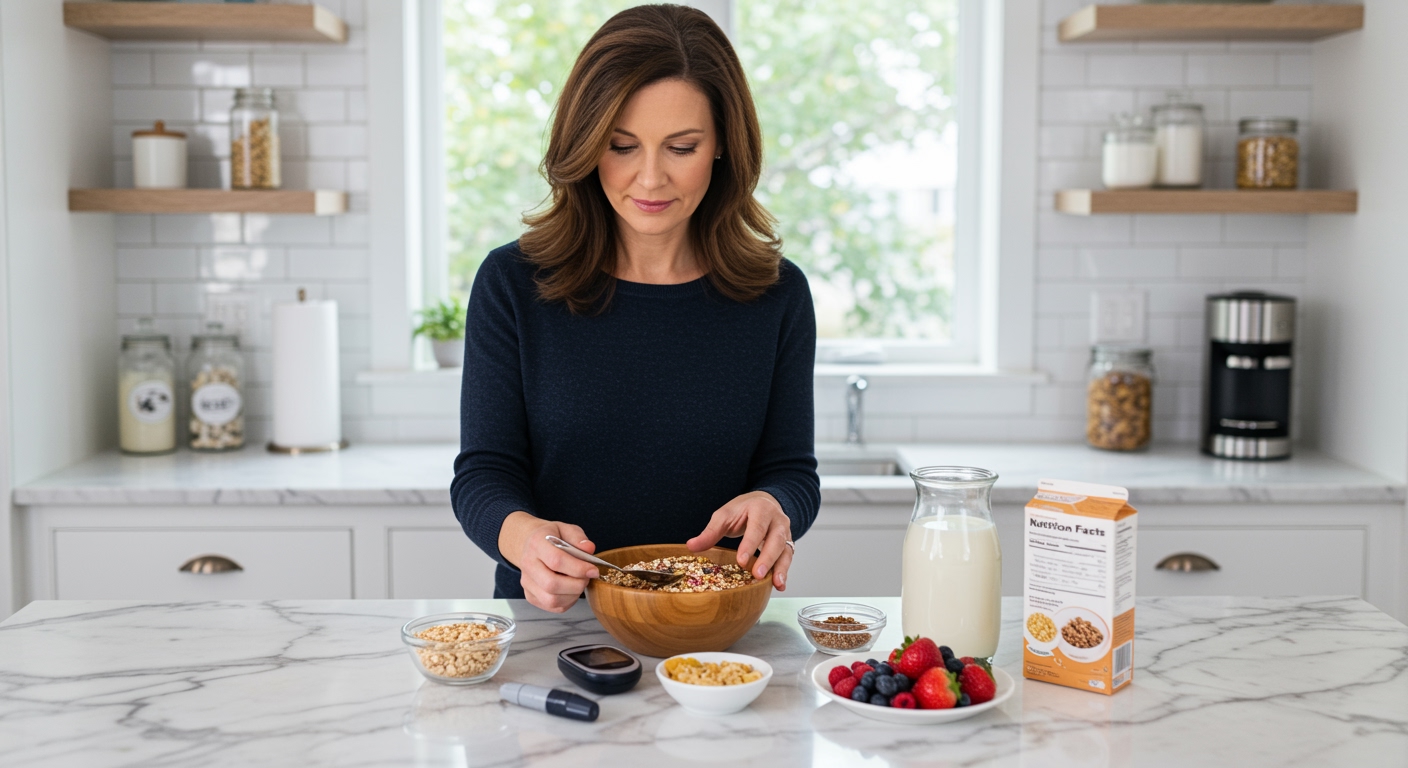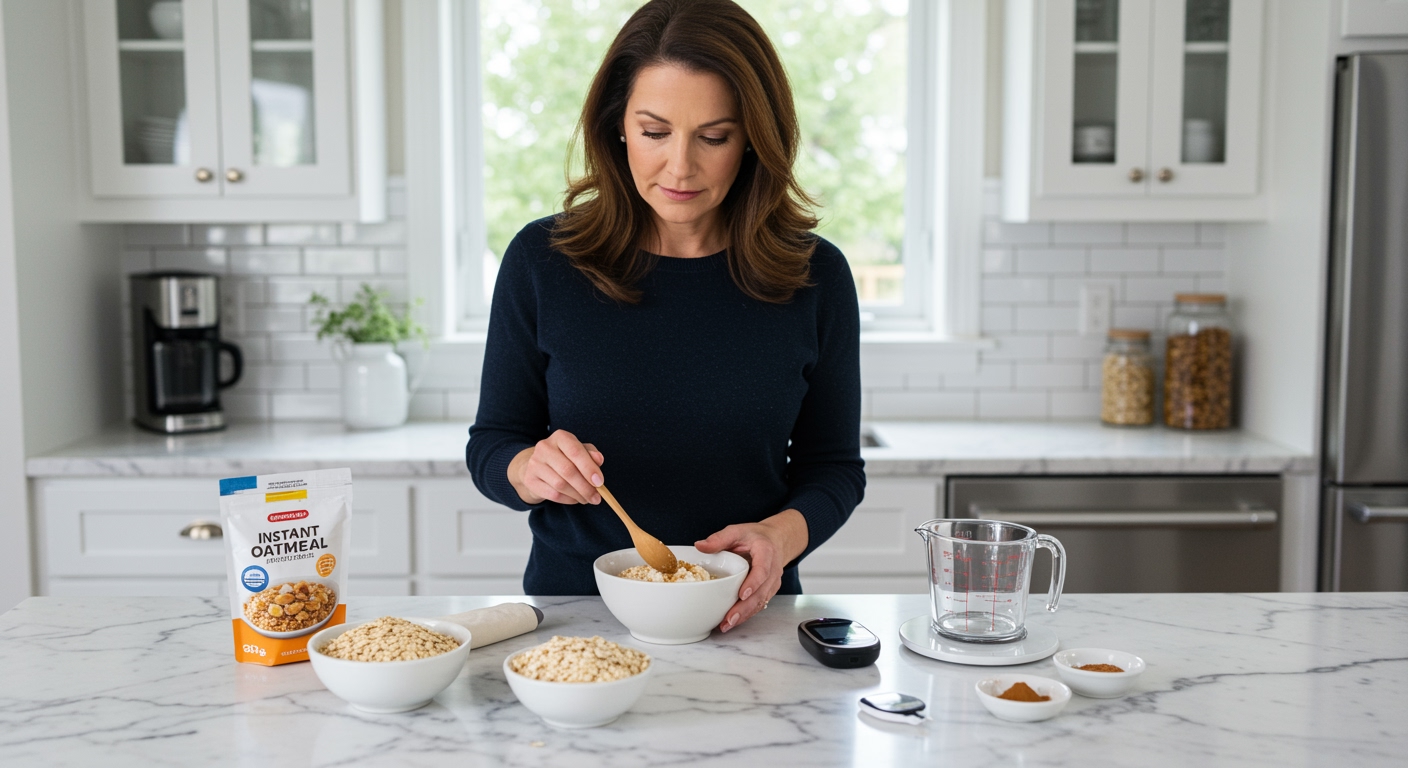✪ Key Takeaway: Grits can raise blood sugar quickly, but small portions with protein and fiber make them safer for diabetes management.
Introduction
Your doctor just told you that you have diabetes, and suddenly every food feels like a minefield.
You might be wondering if your beloved bowl of creamy grits will send your blood sugar through the roof or if you can still enjoy this Southern comfort food safely.
Hi, I’m Abdur, your nutrition coach, and today I’m going to explain exactly how grits affect your blood sugar and share practical strategies to enjoy them without compromising your diabetes management.
What Happens When You Eat Grits?
Grits are made from ground corn, which means they contain mostly carbohydrates that your body breaks down into glucose.
When you eat a bowl of grits, your digestive system quickly converts these carbs into blood sugar within 15 to 30 minutes.
The glycemic index of grits ranges from 65 to 69, which puts them in the medium to high category for blood sugar impact.
This means grits can cause a faster and higher spike in your blood glucose compared to foods like oatmeal or quinoa.
Your pancreas responds by releasing insulin to help move this glucose from your bloodstream into your cells for energy.
However, if you have diabetes, your body either does not produce enough insulin or cannot use it effectively, leading to prolonged high blood sugar levels.
✪ Fact: One cup of cooked grits contains about 38 grams of carbohydrates, equivalent to eating 2.5 slices of white bread.
How Much Grits Can You Safely Eat?
The key to enjoying grits with diabetes lies in portion control and timing.
A safe serving size for most people with diabetes is about one-third cup of cooked grits, which contains roughly 12-15 grams of carbohydrates.
This portion fits well within the recommended 15-30 grams of carbs per meal for many diabetes management plans.
You should always measure your portions rather than eyeballing them, as restaurant and home servings often contain 2-3 times this amount.
The best time to eat grits is during breakfast or lunch when your body can better utilize the energy throughout the day.
Avoid eating grits late in the evening, as your metabolism slows down and blood sugar control becomes more challenging.
Remember that individual responses vary, so monitor your blood sugar 2 hours after eating to understand how grits specifically affect you.
✪ Pro Tip: Use a kitchen scale to weigh 85 grams of cooked grits for the perfect diabetes-friendly portion.
What Should You Add To Your Grits?
The secret to making grits diabetes-friendly lies in what you combine them with, not just avoiding them entirely.
Adding protein sources like scrambled eggs, Greek yogurt, or lean turkey sausage slows down the absorption of carbohydrates and helps stabilize blood sugar.
Fiber-rich additions such as chopped vegetables, ground flaxseed, or chia seeds create a barrier that further slows glucose absorption.
Healthy fats from sources like avocado, nuts, or olive oil also help moderate blood sugar spikes while adding satisfying flavor and texture.
Avoid adding sugar, honey, syrup, or dried fruits, as these will cause an even more dramatic blood sugar increase.
Instead, use cinnamon, herbs, or spices to enhance flavor without adding carbohydrates.
Fresh berries in small amounts can add natural sweetness while providing antioxidants and fiber that benefit blood sugar control.
✪ Note: Two tablespoons of chopped walnuts can reduce the glycemic impact of grits by up to 20 percent.
Are Some Types Of Grits Better Than Others?
Stone-ground grits are your best choice because they undergo less processing and retain more of their natural fiber and nutrients.
These grits have a slightly lower glycemic index compared to instant or quick-cooking varieties that have been heavily processed.
The processing removes the germ and bran, which are the parts that contain fiber and slow down carbohydrate absorption.
Instant grits also often contain added sodium and preservatives that can contribute to other health issues common in people with diabetes.
Yellow grits contain slightly more antioxidants than white grits due to their carotenoid content, though the difference is minimal for blood sugar impact.
Cheese grits and flavored varieties typically contain added fats and sodium that can complicate diabetes management and should be avoided.
Always check the ingredient list and choose products with only ground corn and minimal additives.
✪ Fact: Stone-ground grits take 20-30 minutes to cook but have 15 percent more fiber than instant varieties.
When Should You Avoid Grits Completely?
Some situations require you to skip grits entirely for better diabetes management.
If your most recent A1C test showed poor blood sugar control above 8 percent, focus on lower-carb alternatives until your numbers improve.
People with gastroparesis, a diabetes complication that slows stomach emptying, should avoid grits because they can worsen blood sugar unpredictability.
During illness or stress, your body produces hormones that make blood sugar harder to control, making high-glycemic foods like grits more problematic.
If you are taking certain medications like steroids that raise blood sugar, temporarily eliminating grits helps prevent dangerous spikes.
Anyone experiencing frequent low blood sugar episodes should work with their healthcare provider before adding grits back to their diet.
Remember that individual tolerance varies greatly, and what works for others may not work for your specific situation.
✪ Pro Tip: Test your blood sugar 2 hours after eating grits to determine your personal tolerance level.
The Bottom Line
Grits can be part of a diabetes-friendly diet when you eat them in small portions, choose stone-ground varieties, and pair them with protein and fiber.
Smart food choices are not about perfection but about making informed decisions that support your long-term health goals.
I would love to hear about your experiences with grits and diabetes management, so please share your questions, success stories, or challenges in the comments below.
References
At NutritionCrown, we use quality and credible sources to ensure our content is accurate and trustworthy. Below are the sources referenced in creating this article:
- Tap Health: Can Diabetics Eat Grits?
- Signos: Grits Glycemic Index
- SugarMDs: Are Grits Healthy for Diabetics
- MedlinePlus: Carbohydrate Counting





